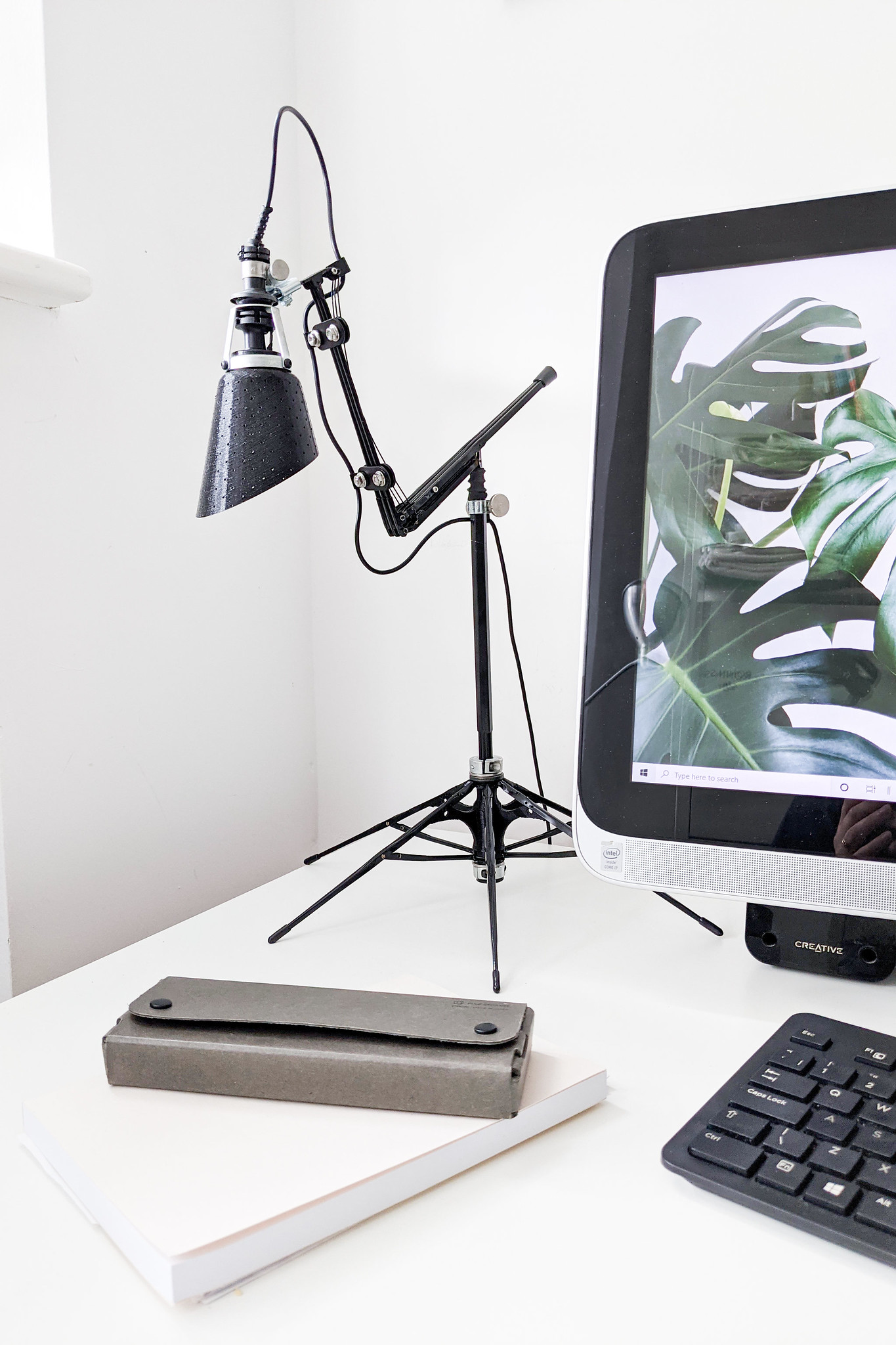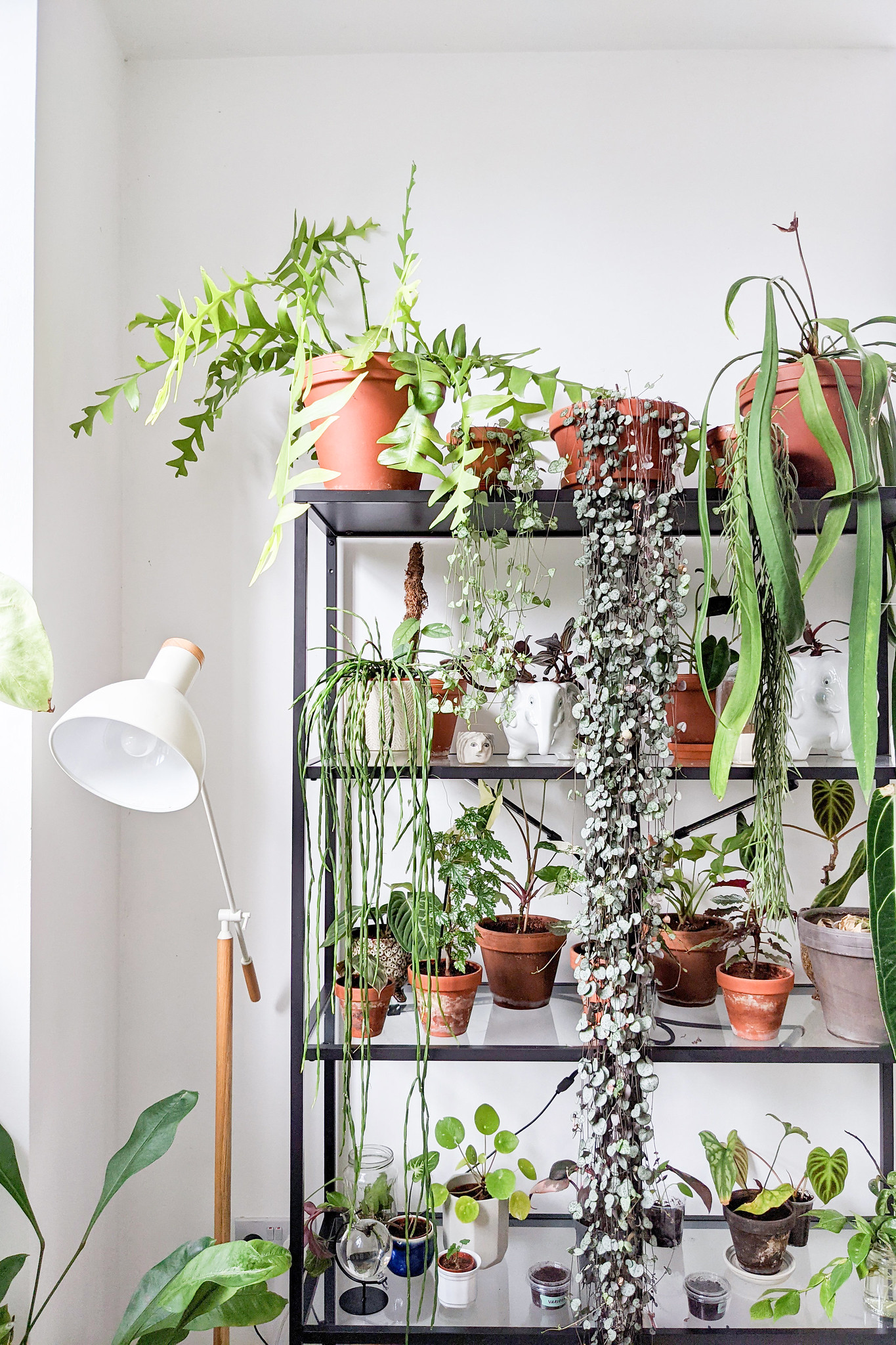
The simplest way to decorate your home with a tight budget and very little decorating skills is to do it slowly, keep it simple, and be particular about what you buy. The most sustainable purchase is the one you've already made. Reusing and repurposing the stuff already in your home is the least wasteful way to decorate but, if you need to make quality of life improvements and replace worn out furniture, there are eco-friendly ways to decorate your home by taking a slower, more sustainable and less wasteful approach.
When decorating my home, I made a conscious decision to keep furniture to a minimum and filled the awkwardly empty space with plants. It's meant the decoration in my home has literally grown and changed over the years. I thrift as much as possible, repair, refresh, and repurpose what I already have, and make considered purchases that will improve my quality of life. I use what I already have to refresh my space before buying something new. It's the only way to balance out the desire to have a pleasing to look at and comfortable to live in home, while also making eco-friendly decisions about what we buy.
If you’ve wondering how to decorate your home in a sustainable way with a tight budget or minimal decorating skills; this is how you can embrace slow decorating and make more eco-friendly home decor choices.

Decorate Slowly
Having to live with rooms the previous owners painted in ugly colours, hand-me-down furniture, and mismatched fixings can make a home feel awkward and unlikable. I know, I've been there! Decorating your home with the current trendy homewares might make it look good immediately but it'll quickly fall out of style, and you'll be a left with a home that doesn't feel like yours. Instead, decorate slowly. Slow decorating gives you time to live in and get to know your space so that you can invest in purchases that improve your quality of life.
When we fill our space with things we picked up on a whim from retailers, we end up with a home void of life and personality. Decorating slowly allows our homes to change and evolve as we live in it. I've decorated my home with carefully thrifted items, gifts from friends and family, plants, books, and art I've collected over the years. It's taken years but the things I have on display are unique to my space. Homes that are decorated in this way reflect the personalities and interests of the people who live in them, rather than looking like a cookie-cutter showroom.
Go Room By Room
Prioritise the rooms you can find the most faults with. Consider how the space can be improved and how. How do you use the space? What currently works and what doesn't? Do you need to rethink storage or declutter? Sometimes decorating can be as simple as refreshing the paint, fixing dings to furniture, or repairing something that's not working. You might find you already have what you need to make a room feel fresh again by looking in other areas of your home. If more work is needed, write a list of what you want to improve and how.
By trying to tackle everything that needs improving in your home, you stretch your time and budget too thinly. Focusing on each room in turn based on importance, you can invest more in decorating and see a bigger improvement to your quality of life, comfortable, and enjoyment. Try rearranging the space first before considering renovations or redecorating. Switching up my living room completely changed how the room feels, and I didn't have to do anything except move furniture around and paint touch-ups.
Declutter Before Decorating
Before getting started with decorating, it's worth decluttering your space first. This will help you to get rid of any excess belongings cluttering up a room, and unearth an item or two you may be able to use to decorate or repurpose for use elsewhere. You'll be able to see the space clearly without the clutter getting in the way, making it easier to decide what needs changing and how you want to decorate. It's the first thing I do before even considering decorating a room. Decluttering immediately refreshes your space making it look clear and fresh.
It's easy to feel you need to buy more stuff in order to create the space you want. It's more likely you simply need to declutter and reset your space rather than make new purchases. Use what you have, downsize any collections, and declutter your home. It'll give you the clarity you need to see your space as it is and how it could be. Only after decluttering should you decide how best to decorate and with what.
Borrow Tools
If you're not a frequent DIY-er, chances are you don't need to own many tools. Borrow them instead. Friends and family may have the tools (and skills) you need to complete a decorating task. Failing that, there are shops you can rent tools from in order to get the job done. Having a small selection of basic tools can be useful for simple tasks, like hanging frames and fixing loose screws. For the more heavy-duty, once-a-year decorating tasks, you can likely get away with borrow rather than buying the tools you need.
I have a small drawer with DIY supplies. A couple of basics tools to put up shelves or fix things. If I ever need to do something more heavy-duty, like put up a new bathroom cabinet, I borrow the tools from a friend or tool shop. If you're a keen DIY-er who has projects all year round, owning tools might be a worthwhile investment. For the rest of us, borrowing tools is a better solution as it avoids the unnecessary expense and space required to store them.

Stick To A List
Shops are designed to get you to spend more money. Minimise your chances of being tempted to pick up more than you need by creating a list and sticking to it. It's the number one thing I do when planning to redecorate my space. I focus on one room at a time and note everything I want to change and how I'm going to change it. From the fixtures I need to buy and where from to the furniture I need to order. Having a master list with the exact tasks you need to complete or items you need to buy means you can stick with only buying what you need to.
Without a list it's tempting to buy more than you need when you see something you like especially when those items have been styled in a way that manipulates you into wanting them. From the carefully curated showrooms in IKEA to the homeware sections in fast fashion retailers. You're being primed to spend your money. Having a list helps avoid the temptation and it works.
Save On Fixtures
While aesthetic fixtures make a room look cohesive and feel stylish. You don't need to pay extra for a designer brand to achieve a beautiful home. Skipping on the designer fixtures for identical, cheaper alternatives means you'll have a bigger budget for the more important purchases that improve your quality of life. Small independent businesses are often a great place to source handmade homewares inspired by popular designs at a much more affordable price. As are charity or thrift shops.
Perhaps you disagree on this approach. My budget is small and my apartment is rented. I would rather save on the aesthetic fixtures in order to spend more on comfortable furniture or functional homewares that have been sustainably-made using eco-friendly processes and materials. A home that's pleasing to look at will boost your mood but you don't have to pay designer prices to achieve that. Having a home that's comfortable to live in is much more important.
Invest In The Important Stuff
Decorating slowly, thrifting often, sticking to a list, and saving on fixtures gives you a little extra budget for investing in the big stuff. Buying less but buying better is the most sustainable option. Holding off on making purchases (if you can) until you have a bigger budget means you'll be able to invest in higher quality, better designed furniture that will last you decades and improve your quality of life. I held off on purchasing an office desk until I could afford a bespoke one from a local independent carpenter that was perfect for my space. Carefully chosen smaller items can improve the look of a room just as much as furniture. The Anti Desk Lamp(gifted) is made from recycled umbrellas and 3D printed recycled plastic filaments. A sustainable alternative to mass-produced lamps that are as beautiful as they are functional.
Buying less but buying better isn't always an accessible solution for everyone. When I first moved into my apartment, my budget was tight and we needed a sofa to sit on. It turned out to be a real dud: uncomfortable, poorly made, and nothing like the photos. I wish I'd realised a better solution would have been to buy a cheap but comfy second-hand sofa and save up for a high quality, comfortable sofa. Charity shops and thrift stores have plenty of sofas and beds for really affordable prices. It's a sustainable way to furnish your home that helps reduce waste and save money.

